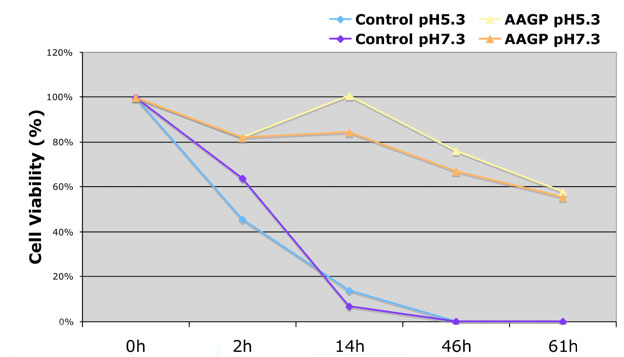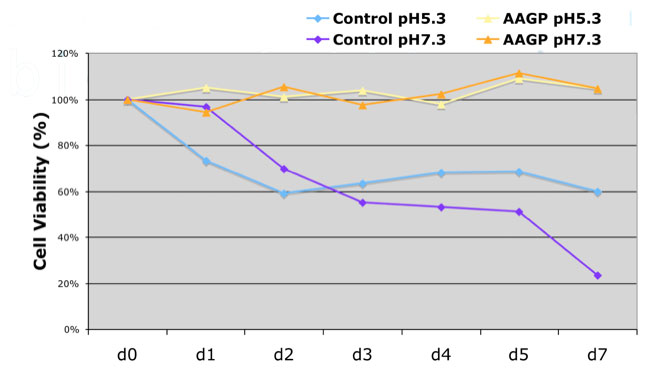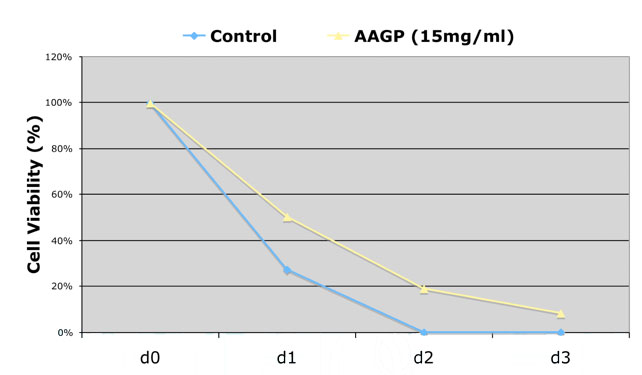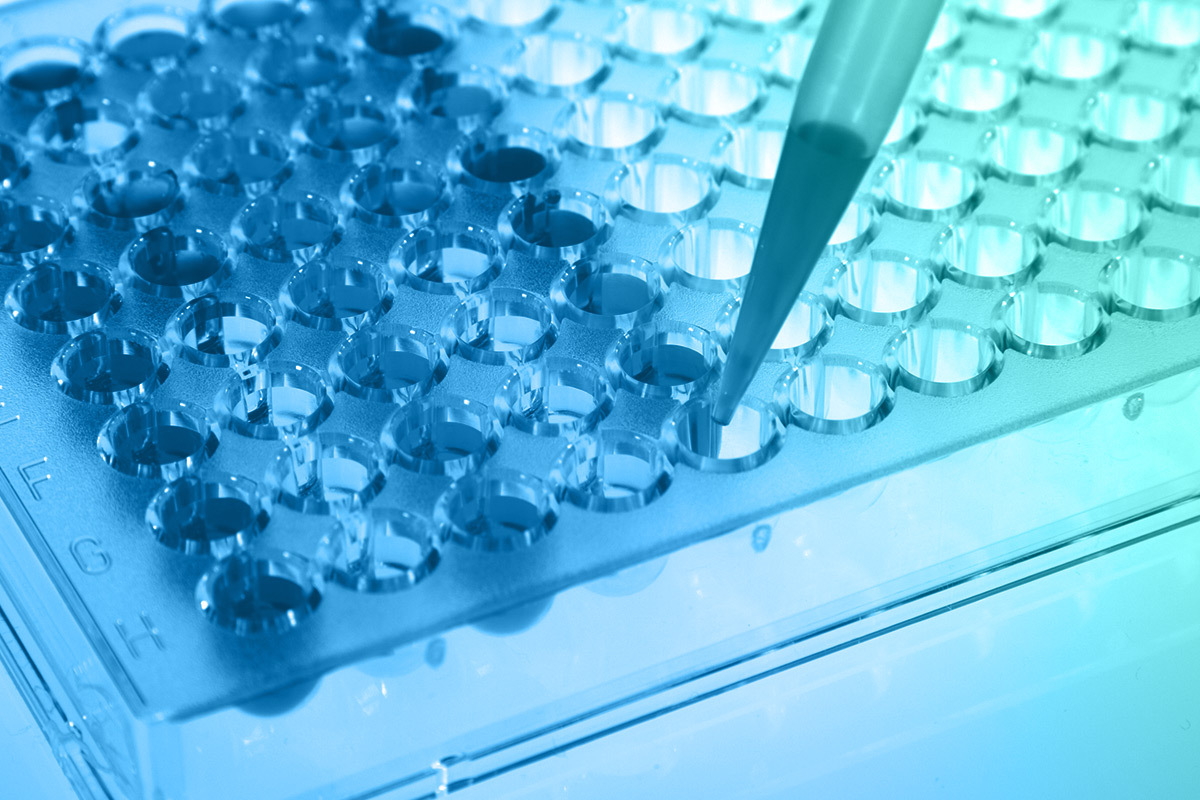Is AAGP®'s Bioactivity pH Dependent: Protective Effects of AAGP® on Hydrogen Peroxide and Low temperature (15°C) Induced Cell Death in Human Adult Fibroblast at pHs of 5.3, 7.3 and 10.5.
Hussein and Retamal, December 2005
Introduction
It is becoming increasingly apparent that AAGP® has strong cell preservation qualities. With this in mind a series of experiments mimicking cell stress conditions (pH, oxidative stress, low temperatures and time) were conducted to challenge both human adult and neonatal fibroblasts exposed to AAGP® in comparison to human adult and neonatal fibroblasts not exposed to AAGP®. This was done with the use of AAGP® as a anti- aging cosmetic, protecting skin from the harsh environment, in mind. The particular experimental protocol aimed to elucidate the protective effects of AAGP® against both temperature and oxidative stress induced cell death at different pHs.
Method
Hydrogen Peroxide – Adult fibroblasts were plated at a concentration of 1×105 cells/ml and grown on non-adherent plates in serum-free media at 37°C in the presence of 1mM hydrogen peroxide and a concentration of 0 or 15mg/ml AAGP®. To test the affects of AAGP® at different pHs this was repeated at a pH of 5.3 (the normal pH of AAGP®) and 7.3. Cell counts were taken at various time points using Trypan blue and two counts were performed per sample to calculate the percentage viability (from 0 hours) of the cell sample.
Temperature – Adult fibroblasts were plated at a concentration of 2×105 cells/ml and grown on non-adherent plates in low- serum media at 15°C in the presence of a concentration of 0 or 15mg/ml AAGP®. To test the affects of AAGP® at different pHs this was repeated at a pH of 5.3 (the normal pH of AAGP®), 7.3 and 10.5. Cell counts were taken at various time points using Trypan blue and two counts were performed per sample to calculate the percentage viability (from 0 hours) of the cell sample.
Results
Hydrogen peroxide – 61 hours post 1mM hydrogen peroxide exposure all control cells were dead. However, AAGP® exposed cells still remained at 60% viability in both 5.3 and 7.3 pH conditions. Thus AAGP® is affective at both acidic and basic pHs.
Temperature – 7 days post low temperature exposure the control cells kept at a pH of 5.3 were still 60% viable and the control cells kept at 7.3 were 24% viable. This suggests a lower pH is optimal for adult human fibroblasts. However, in terms of the functionality of AAGP® at varying pH cells were 100% viable at both pH levels when exposed to AAGP®. Thus AAGP® is able to function at both 5.3 and 7.3 pH.
At a pH as high as 10.5 the AAGP® was less effective. However, at day 2 20% of the AAGP® exposed cells were still viable compared to 0% of the control cells showing it still has a protective affect at a pH as high as 10.5

Figure 1: Effects of 15mg/ml AAGP® on the survival of hydrogen peroxide treated Human Adult Fibroblasts at different pHs.

Figure 2: Effects of 15mg/ml AAGP® on the survival of low temperature (15°C) treated Human Adult Fibroblasts at different pHs.

Figure 3: Effect of 15mg/ml AAGP® on the survival of low temperature (15°C) treated Human Adult Fibroblasts at a pH of 10.5.


